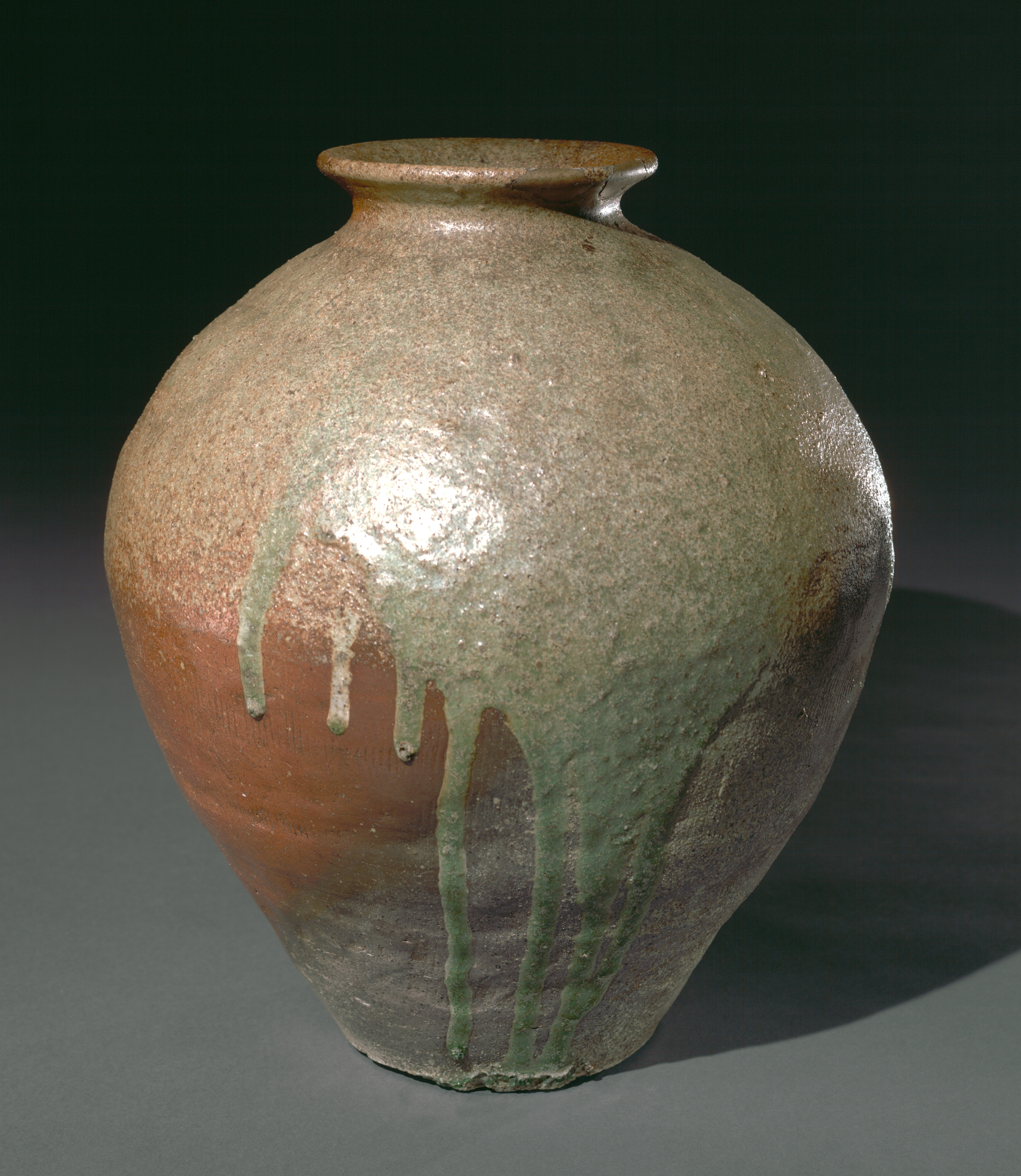The Cleveland Museum of Art
Collection Online as of April 18, 2024

Storage Jar: Tamba Ware
1400s
(1392–1573)
Diameter: 39 cm (15 3/8 in.); Overall: 45 cm (17 11/16 in.)
Location: not on view
Description
This vessel served as a storage container for rice or other grains in medieval farming communities. The piece was made by potters in Tamba, a fertile region west of Kyoto which used such vessels to send its agricultural products to towns throughout western Japan. Tamba ware is recognized by its warm green glaze, created as accumulations of natural wood ash settle on the clay body and liquefy when the kiln temperature is sufficiently high. The jar's contours reveal that it was built in four stages from many clay coils pressed together by hand. The smooth neck and mouth were wheel-turned. The vertical, incised lines visible on the reddish-brown body indicate where a comb-like tool scraped excess clay from the body wall; this technique helped conserve clay material and wood used in the firing. The scraping also exposes the grittiness of local Tamba clay, which in the 15th century did not undergo an extensive refining process.- ?–2002(James J. Freeman, Kyōto, Japan, sold to the Cleveland Museum of Art)2002–The Cleveland Museum of Art, Cleveland, OH
- Grossman, Nancy, James T. Ulak, Marjorie Williams, and Laurence Channing. Art of Japan: Masterpieces from the Cleveland Museum of Art. Cleveland, OH: The Cleveland Museum of Art, 2005. Mentioned and Reproduced: p. 58Freeman, J. "Just One Thing After Another." Impressions: Official Publication of the Ukiyo-E Society of America 39, pt. 1 (2018): 67-129. Reproduced: p. 73, fig. 4
- {{cite web|title=Storage Jar: Tamba Ware|url=false|author=|year=1400s|access-date=18 April 2024|publisher=Cleveland Museum of Art}}
Source URL:
https://www.clevelandart.org/art/2002.66